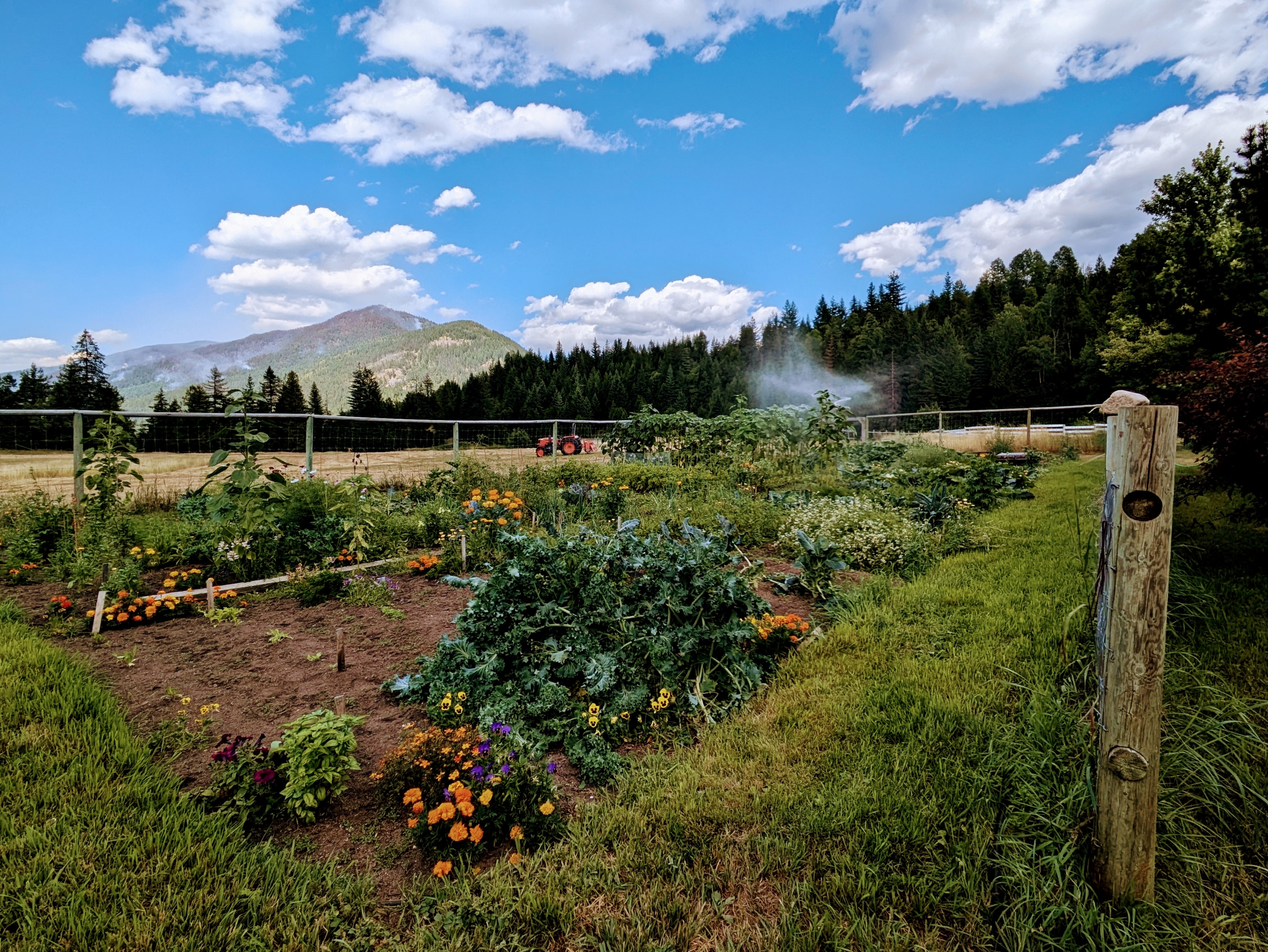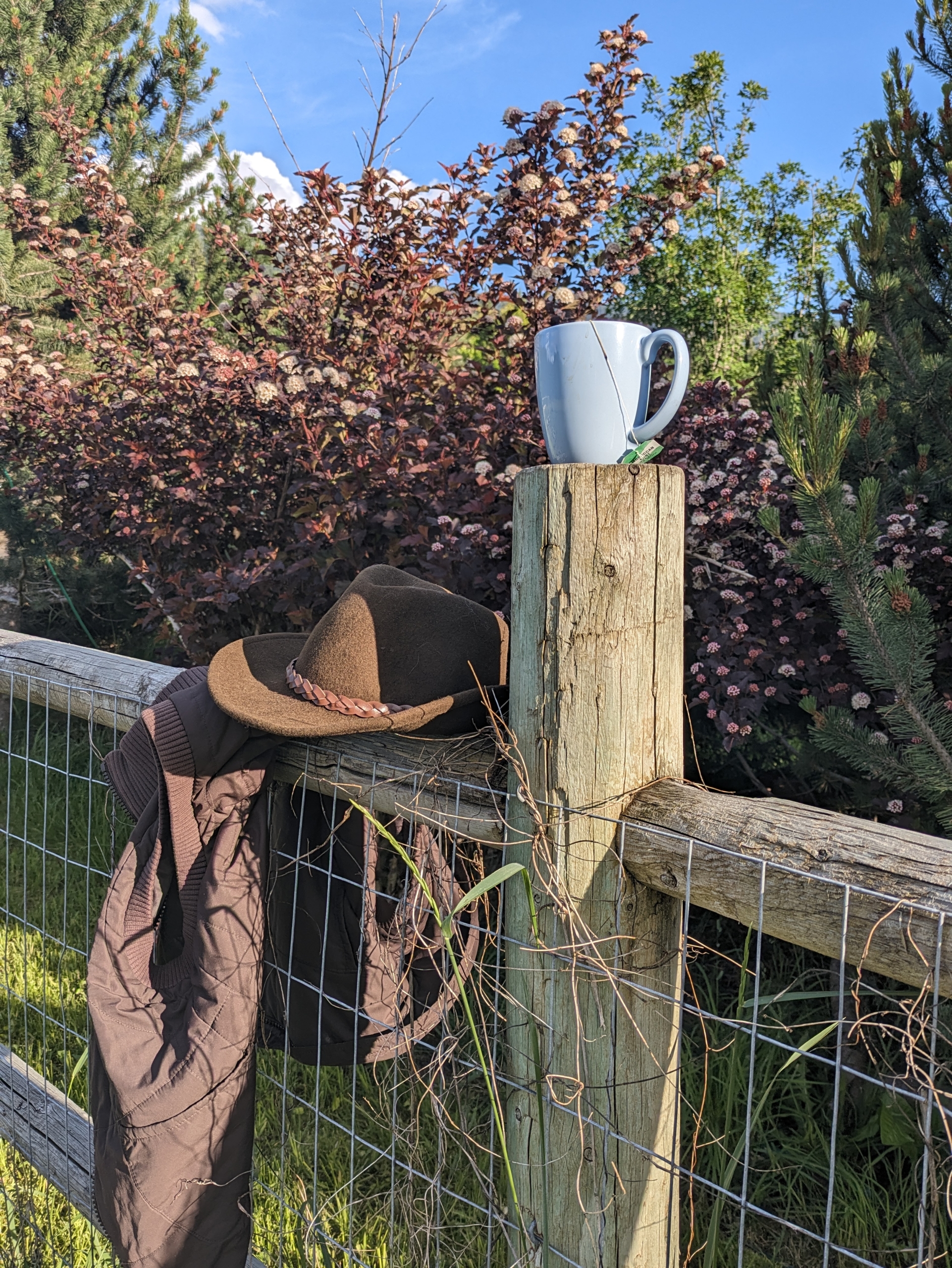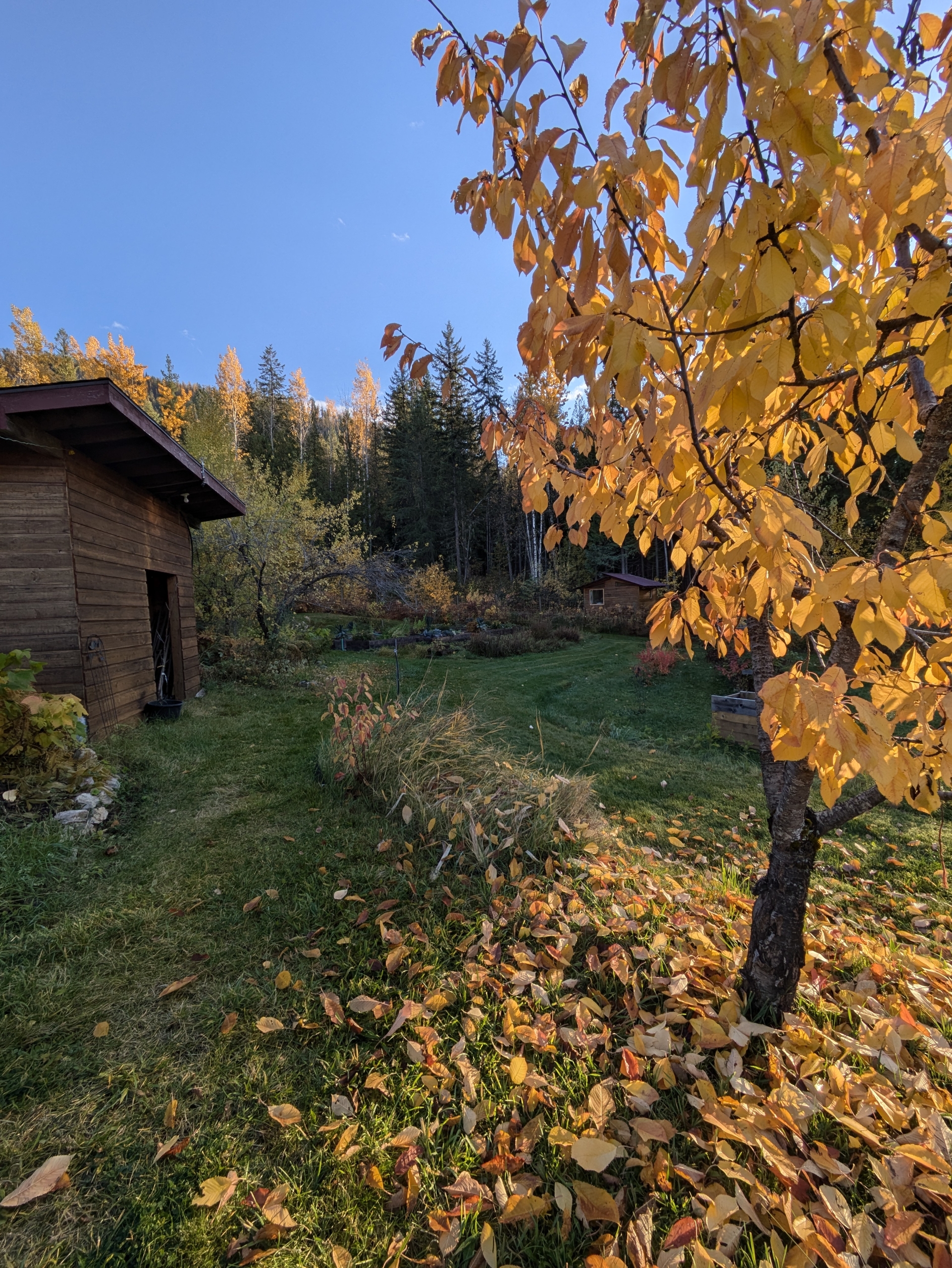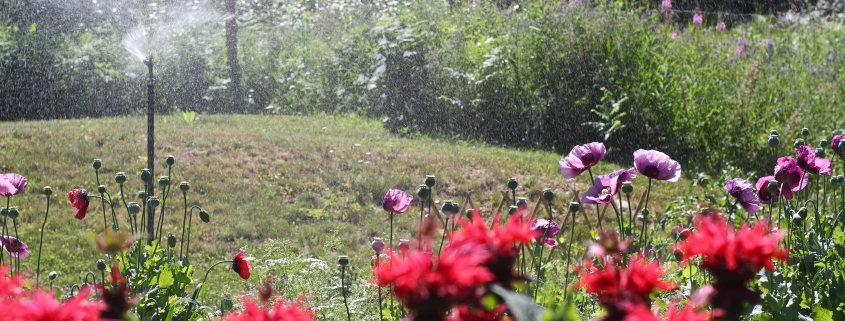Garden Lover
Every spring, after especially long winter seasons in the mountains and valleys of the Kootenays in BC Canada, I remember just how very much I love gardening. How could I have forgotten? I exclaim to myself, each year, surprised by my forgetting. Stepping back into the garden once the ground has thawed and a soft spring sun hits my back, I remember and it feels so deeply good, like visiting a friend overseas and catching up over tea as if no time had passed and all feels right: Dear Garden, you bring me back to sanity, to feeling whole and serene. Same in the autumn season, when the leaves and stems fold to their ground, harvests have been plucked, gathered, celebrated, and all is nodding toward a winter of rest, I bow with gratitude for the solace and serenity gardening provides with such generosity.
This has nothing to do with having a green thumb. In fact, my thumb is definitely not green, and peoples’ who are remain an evasive mystery to me (How do they do it?!). But I am a garden lover… sniffing earth, touching ground, planting seeds with great hope, bending over the green and coloured miracles with delight, rejoicing in the best food ever as it comes from garden straight to family table, tucking the beds in like little babies for the winter slumber, whispering, “Rest well and thank you”. Gardening is also my place and time for contemplation, for happily wandering thought. When I weed – a rather mindless, patient task – my busy mind likes to meander. The good thing is that having my hands in the dirt seems to steer me more toward creative, satisfying thought, rather than the rattling rambling this mind of mine can get tripped over and caught up in.
The insights and take-aways of such meanderings often delight me. I have collected them, some at least. Other mini-epiphanies have occurred to me, only to sail away in the wind like a dandelion seed, cause when your fingers are dirty and your knees grimy, you’re not likely gonna write in that notebook you never bring to the garden. But some have stayed and here they are – little notes and gifts received from myriad seasons of having hands in dirt:
Doing the Unthinkable:
Which in this case, was taking down the big, healthy, water-sucking birch tree which stood strong and, well, smack in the middle of our garden. It didn’t make any sense to cut her down if you just looked at the birch tree herself. She used to be a small sapling, a fellow plant among many, but then, years in the making, she towered over all. Seriously, she was remarkable. She stood proud, tall, and stunning. The only thing was: she was standing in the middle of the garden and spreading her roots under and across all the garden beds. Which meant she was drinking water aplenty from our watering efforts, as well as slurping up the rainfalls, and absorbing copious nutrients, leaving little for the valiant growing efforts of our veggies and herbs. It came to the decision of garden or tree. We hummed and hawed for a few summers. Such a beautiful tree. Finally, we cut her down, after holding hands around her trunk, giving thanks, and promising never to forget her. Since then, the garden has thrived and we hope this birch tree’s spirit lives on in the other birches around the clearing. The lesson here? Even if something in your life is really cool and amazing, but not what you actually want to be doing, you need to stop, so that the rest can grow. Look at our pretty garden now:
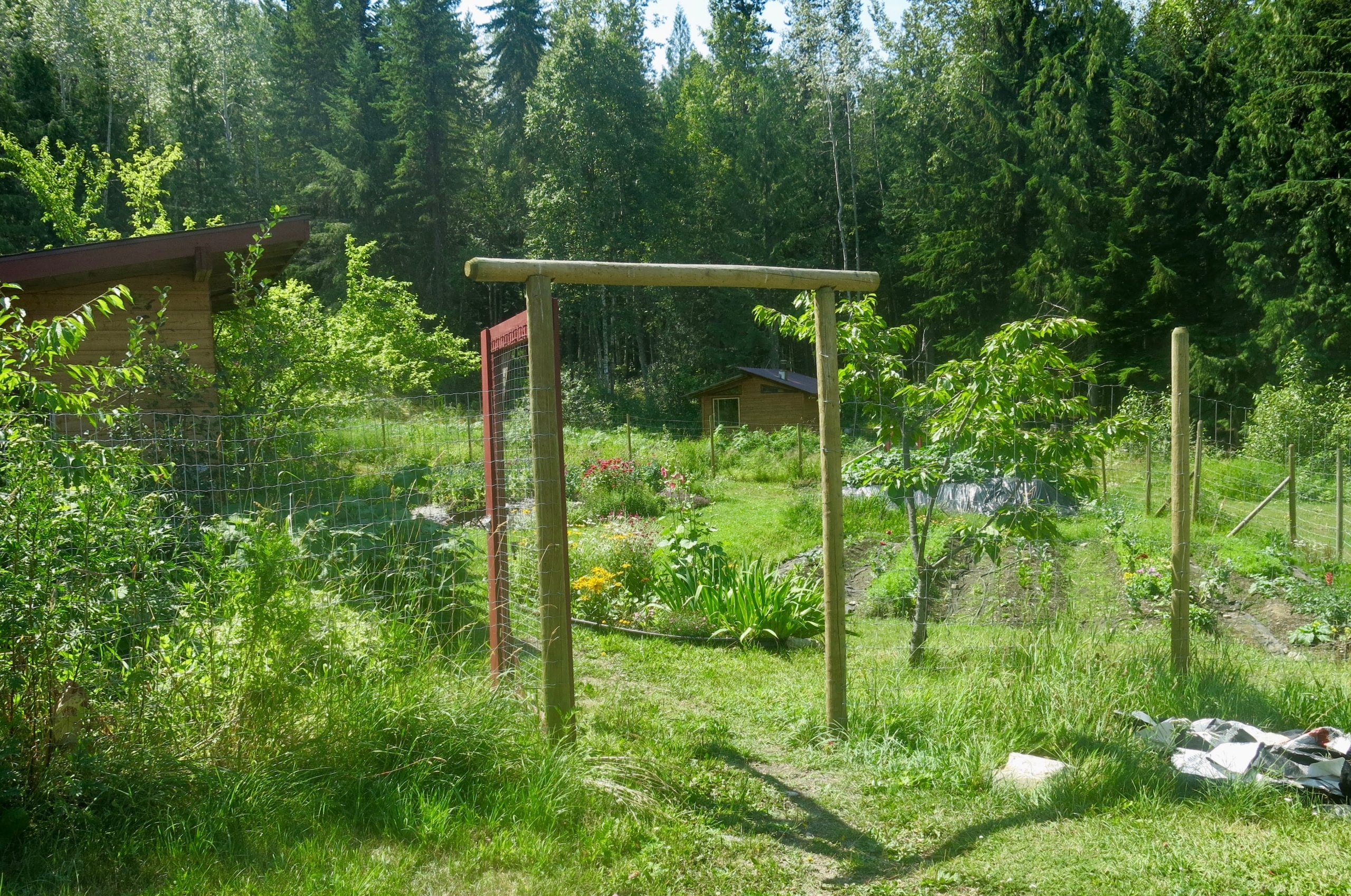
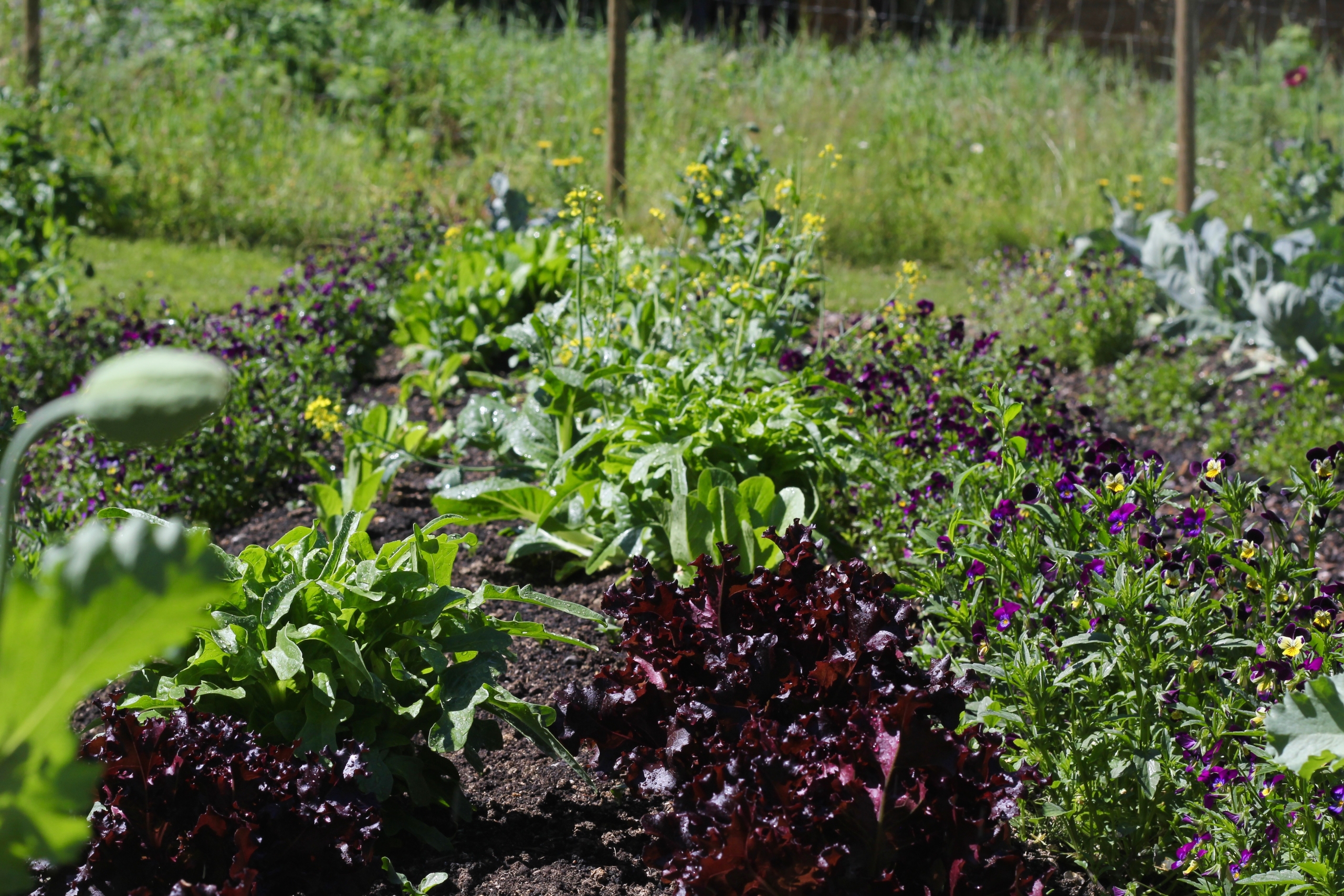

Gotta say No for the Yes to Grow:
On a similar note, every year, when I head to the garden to thin some baby carrots – those wee beginnings of carrots, just tufts of green really – so as to create more space for the few I leave to fully grow and flourish, I encounter the following conundrum. In order to enable a few chosen carrots to thrive I need to pull out a lot of others, and the thicker I originally sowed the carrot seeds, the more I have to yank out. I don’t like yanking out baby carrots. My logical mind tells me they’re just tiny carrots. The rest of me feels like I am murdering baby carrots. Such responsibility. One pull too many and a whole potential carrot is gone! Never to come back. Not that one.
I focus carefully, burdened by the responsibility of picking which one will continue to grow, which one has to go. So many micro-decisions, one wee green tuft after the other. As I curiously follow my inner resistance to the task at hand, I have to chuckle. What a perfect reflection of my struggle with letting go of any one of my “too many projects on the go”, thereby continuously juggling ten balls at once, terrified I could drop one at any moment, or worse, not even notice I had dropped it till days later. Bridging life and my carrot thinning adventures: Where am I compromising depth and quality for too much width and quantity? Where could I serve more if I focused on less? Is there anything in my life that needs thinning, that is taking too much time away from what I am really here to do? And so the yearly carrot thinning exercise reminds me to: a) Sow less and more precisely. b) Discern what I am truly here to do. c) Make choices, clear clutter. If not, I’ll end up with crooked, wonky, small carrots. And exhausted to boot.
Wait, watch and wonder:
You need a bench. Or some such sitting spot. A nook. A hollow, a hill. To sit. To wait, to watch and to wonder. If you’re growing all this stuff with the help of the sun, moon, earth, rain and all… you might as well watch it grow, yes? Sit back and enjoy the fruits of your labor. Let it be and let it do its beautiful thing, which it does so well. And then do the same with the rest of your life… the garage you just built, the article you edited, the meal you cooked, the children you raise, the horses you tend, the students you teach… Stop between tasks or in the middle of them. Breathe, sit back and watch, delight in the being and the becoming of what you are helping exist.
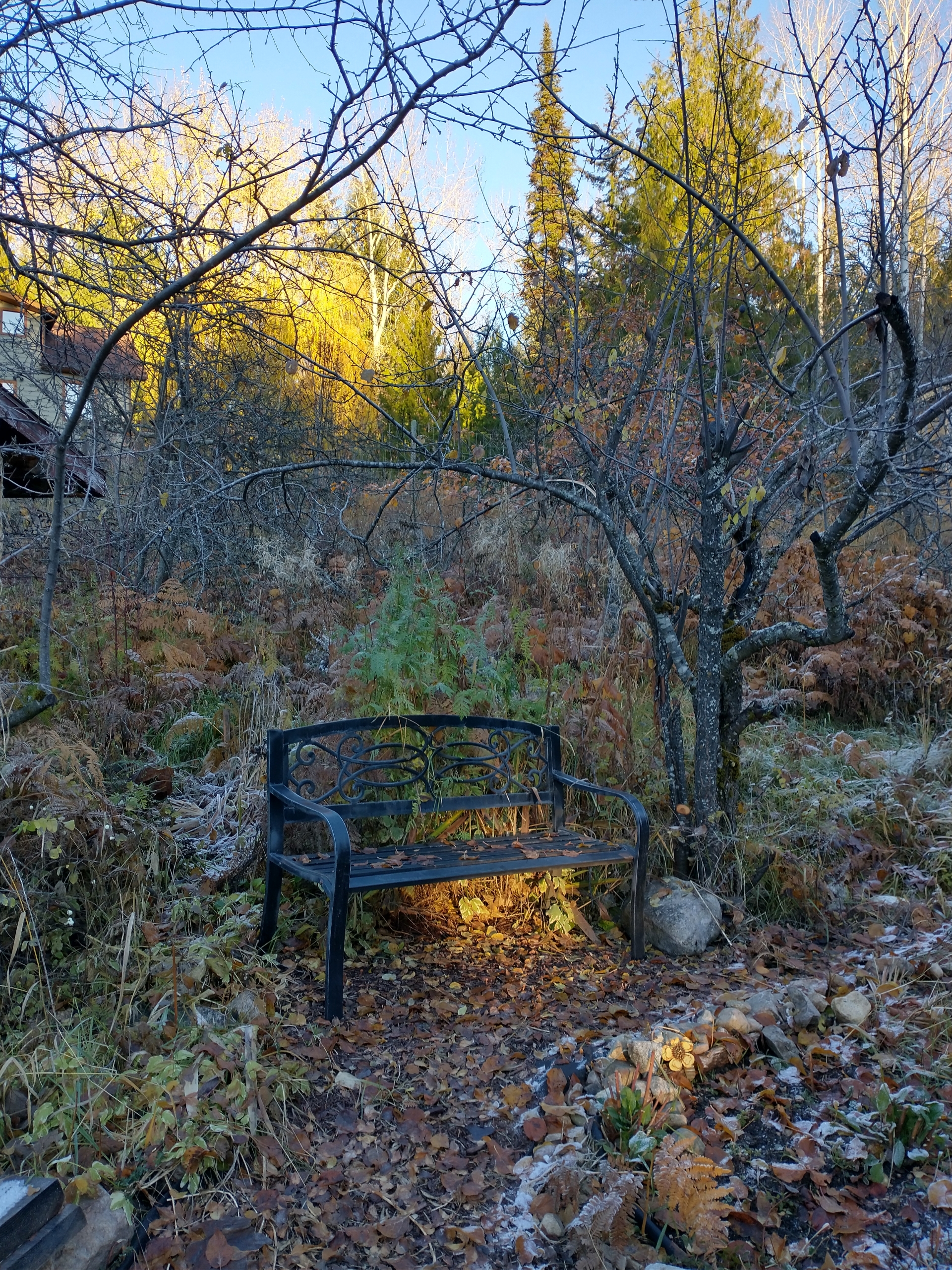
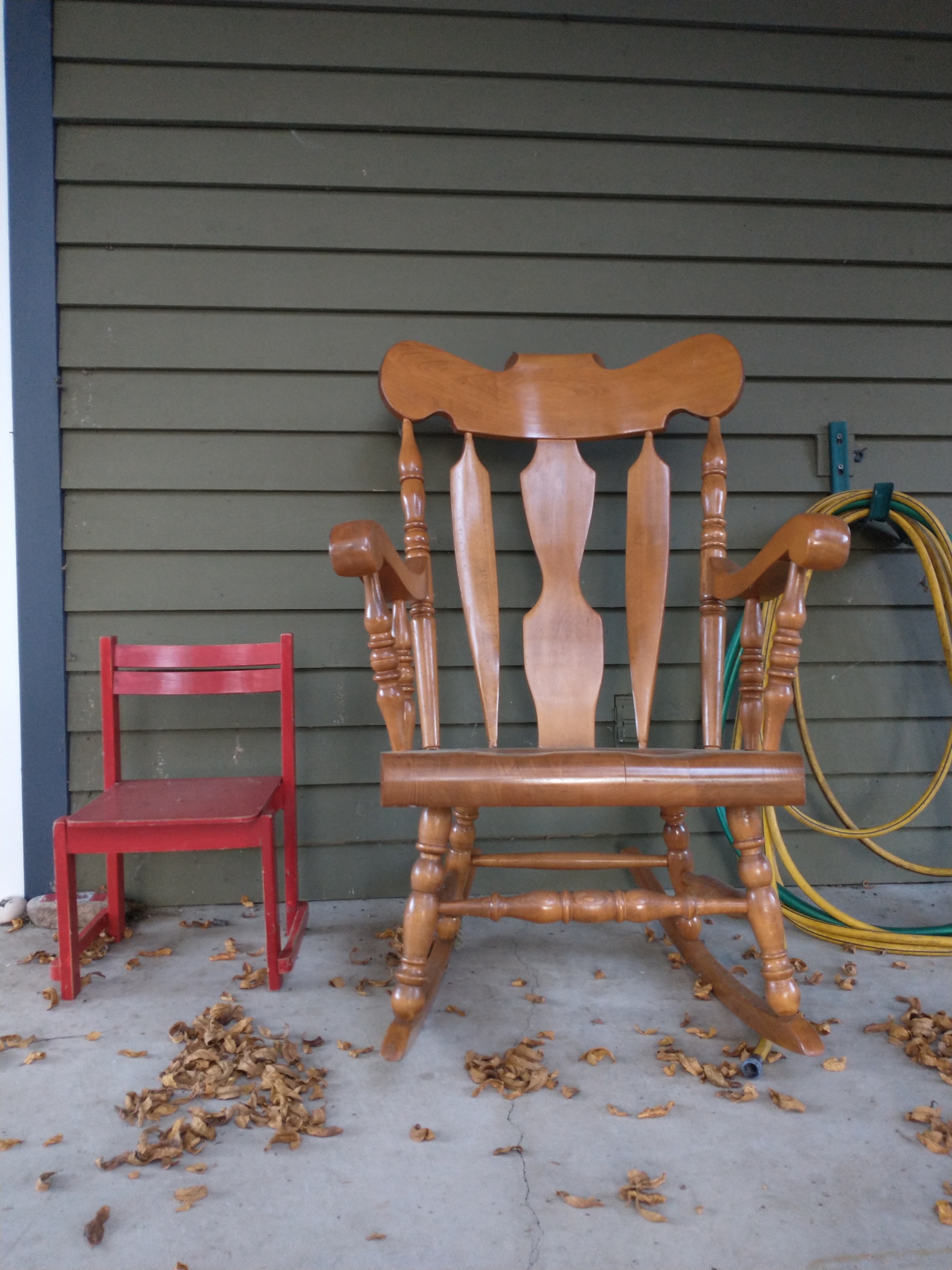
To be Stubbornly Glad:
Gardening is an act of defiance and a gesture of will to believe in life, to provide nourishment, to keep on going. Gardening is a great place to sink your tears, to pray for all those less fortunate, to move that energy, that grief, upon hearing of one tragedy after the other on the news. Gardening is putting the stake in the ground for life, for growth, for bounty. Gardening in the face of despair or simply weariness, is not giving up. It is stubbornness and persistence. It is trust ventured toward an unknown future. It is empowerment and choice to work with life rather than against it. Gardening is also therapy. It soothes and reminds of what you have in front of you: Your breath. Your hands. Seeds of potential. Nature unfolding according to a design ancient and wise. Your place in the puzzle of this unfolding universe. So, keep putting your stake in the ground, and as Jack Gilbert says in Brief of the Defense, “risk delight”.
“We must risk delight. We can do without pleasure,
but not delight. Not enjoyment. We must have
the stubbornness to accept our gladness in the ruthless
furnace of this world.”
Some Things are just Perfect. Like Grazing:
There is an absolute rightness felt upon beholding a young child feeding herself by grazing. Yes, just like a little goat. From raspberry bush to kale leaf. From carrot to red currant. And on to the lettuce, the parsley, the oregano, the lemon balm and chives. “Mmmm. It is SO good, mama!” “Yes, it is, sweetheart!” Seeing my merry lass feed herself in this way over the years always hits me right in that “rightness” place in my gut or soul… kinda the same spot in this instance. Best meal ever. So, the lesson? Plant a garden. Do it wherever and however you can. Could be a pot on your city balcony. Or a row in the front yard. On a roof top. In a community garden. There is always a space, however little it may be, where you can place seed into earth, water, wait and then delight in the harvest always such a space. Tend it. And then: graze to your heart’s delight.
Synergy in Action… where the sum total is more than the parts added up:
Growing a garden often involves more than one person. In my life, it is an endeavour my husband, daughter and I share. Plus a few thousand worms, minerals and who knows what else. Over the years we have figured out who likes to do what, who does what best, and how each of us can serve the most. Our trinity of action is made by finding the sweet spot where our Joy, our Capacity and our Service meet up and basically have a picnic together. What do I love doing? What am I good at doing? And does it serve the Whole? There is a complementary magic to this thing we call team work. My husband is not one for weeding. At over six feet tall, bending and crouching down is not his natural stance. I love it, squatting happily amongst dirt and green. Instead he delights in envisions, planning and landscaping. He excels at harvesting and does it right on time, an art unto itself when fall turns the garden into an overwhelming jungle of food. Our daughter? She is pro at nibbling and grazing, which makes it all worth it, offering a helping hand once in a while (which is nice and makes us think we are helping her build character), and … Voila! There you have it. The thing is: there are patterns here to be noted and built upon. Take landscaping: Steph does the meta-work: the noisy excavator digging big chunks of earth work. I get in there for the next layer, the raking and sifting, down to the patting the earth smooth with my hands (my favourite part). He visions. I add my imaginations and ideas. Back to the drawing board, each adding our part, and eventually we ground the imaginations together. In the end we look around and revisit the many decisions now tucked into the curve of a path, the layout of the beds, the slope angles and new berry patches. We watch our daughter gather tonight’s supper, or journal on the garden bench. So satisfying. We are each folded into the garden in our unique ways. We did it together.
Weeds are rarely just weeds:
As you now know, I love weeding. Such a straightforward task with clear goal and apparent results. Truly therapeutic, clearing mind and heart at the same time as garden bed. I have also noticed that some of my favourite lessons from the garden circle around the theme of weeds. So much symbolism, metaphor and wisdom held in their humble and resilient existence. Today’s note: Sometimes a weed is not actually a weed. May we tread with care, for as soon as we call it such, we dismiss it and do our best to dispatch of it. But: it could be a precious medicinal and well worth considering before you dig it up. Might the pesky dandelion be just what your carb-laden tummy needs: some hearty bitter to calm and balance the biome within? What about the wee pansies spreading their glory everywhere? Pretty food for salads. And the chickweed choking the lettuce heads? Turns out it too is a kind of lettuce. Well, sort of. It’s a green containing many plant compounds, lovely sprinkled onto salads, into soups and over other dishes, with potential soothing and healing qualities for human bodies. Can you hear the whispered wisdom of shadow work in this note? Also of open-mindedness and inquiry? Sometimes the things we deem “bad” are the buried gold that need scooping up in a warm welcome, listening to and integrating. Sometimes that which we don’t want to be, or think we shouldn’t be, and have pushed beyond our self-boundary into the realm of shadow and shame, just needs coaxing back into the daylight, appreciated, and allowed to exist and grow so that we become more whole.
Get to the Root of Matter. If you can:
Halfhearted weeding ends up being none at all. For before you blink, plus a few days of rain and sun, and that weed is right back, persisting as ever in your garden, and basically calling out with glee: “Ha, told you you can’t get me!” Plus not much comes close to the obvious satisfaction of pulling out a weed all the way down to its very roots. A thrill of success every time. The lesson: Getting to the root of any matter is always worth it, instead of engaging in endless symptom patching. This applies to all human conundrums too. If you’re sad, finding out what’s at the source of the tears is how you make way for real solace. Same with mad. And scared. We cover up so much. We pretend, we patch, we make do. And before we know it, what we tried to cover up just comes rearing back again, and so we circle round and round instead of spiralling up and on. So take the time to dig, follow the root till its end, bring it up to the light, and let it tell you its story.
And then, some roots just won’t ever come out, try as you may. Its like they are wedded to the earth forever, and no pulling, teasing, or cajoling will ever get them fully out. Take horsetail, for example. I hear it comes from prehistoric times. I don’t doubt it. There is no way – and I have tried, believe me – that you can ever get rid of the horsetail in your garden. As soon as you pull one up, if you’re even lucky enough to get its root before it snaps, there are a zillion others just next door, underneath, in between and around. As far as I can tell, there is an underground maize of interlocked horsetail, all on a mission to exist forever. And so there is a time and place for acceptance too. For surrender, and how does that saying go? Something like: Change what you can, accept what you can’t, and have the wisdom to know the difference.

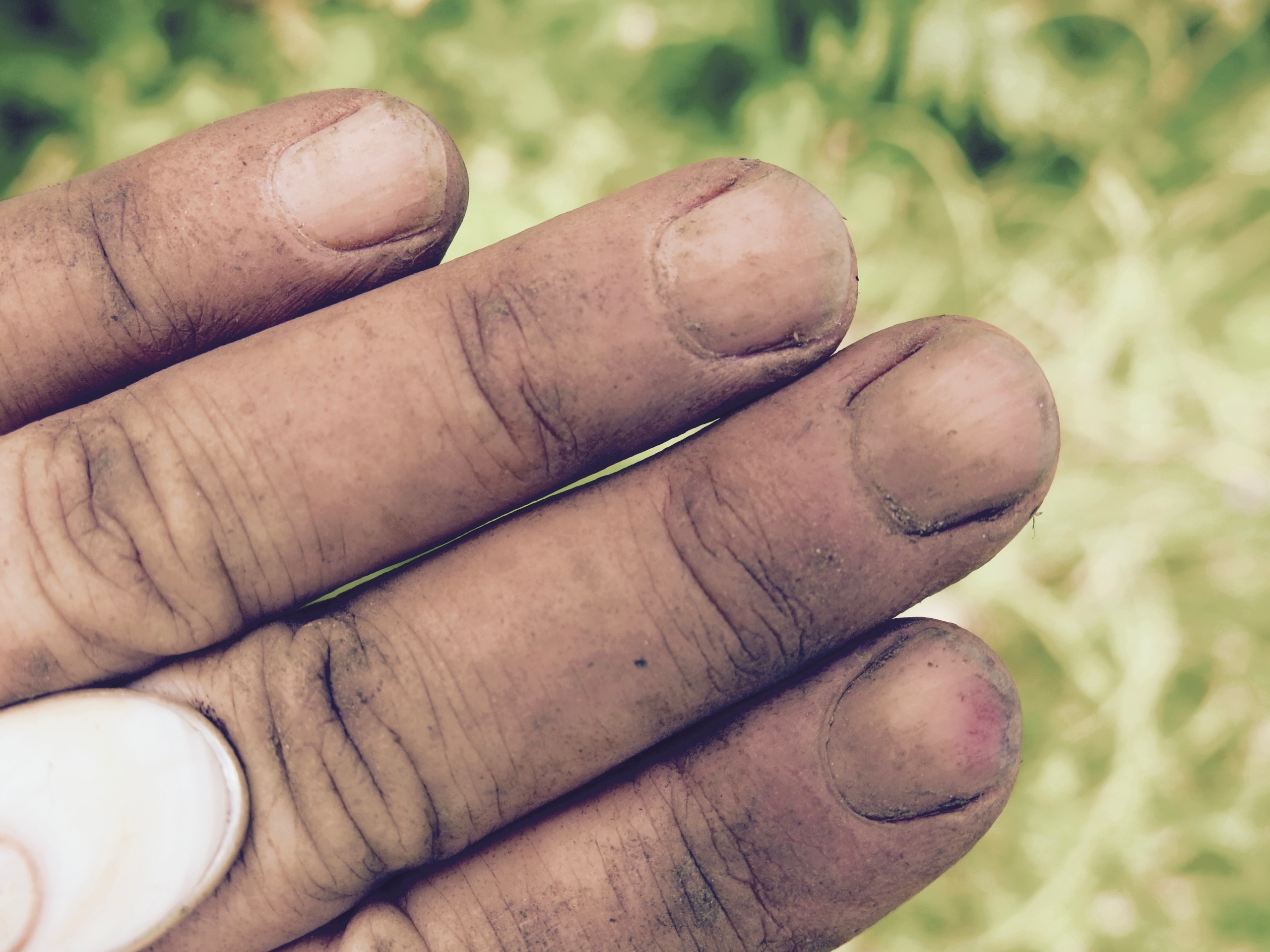
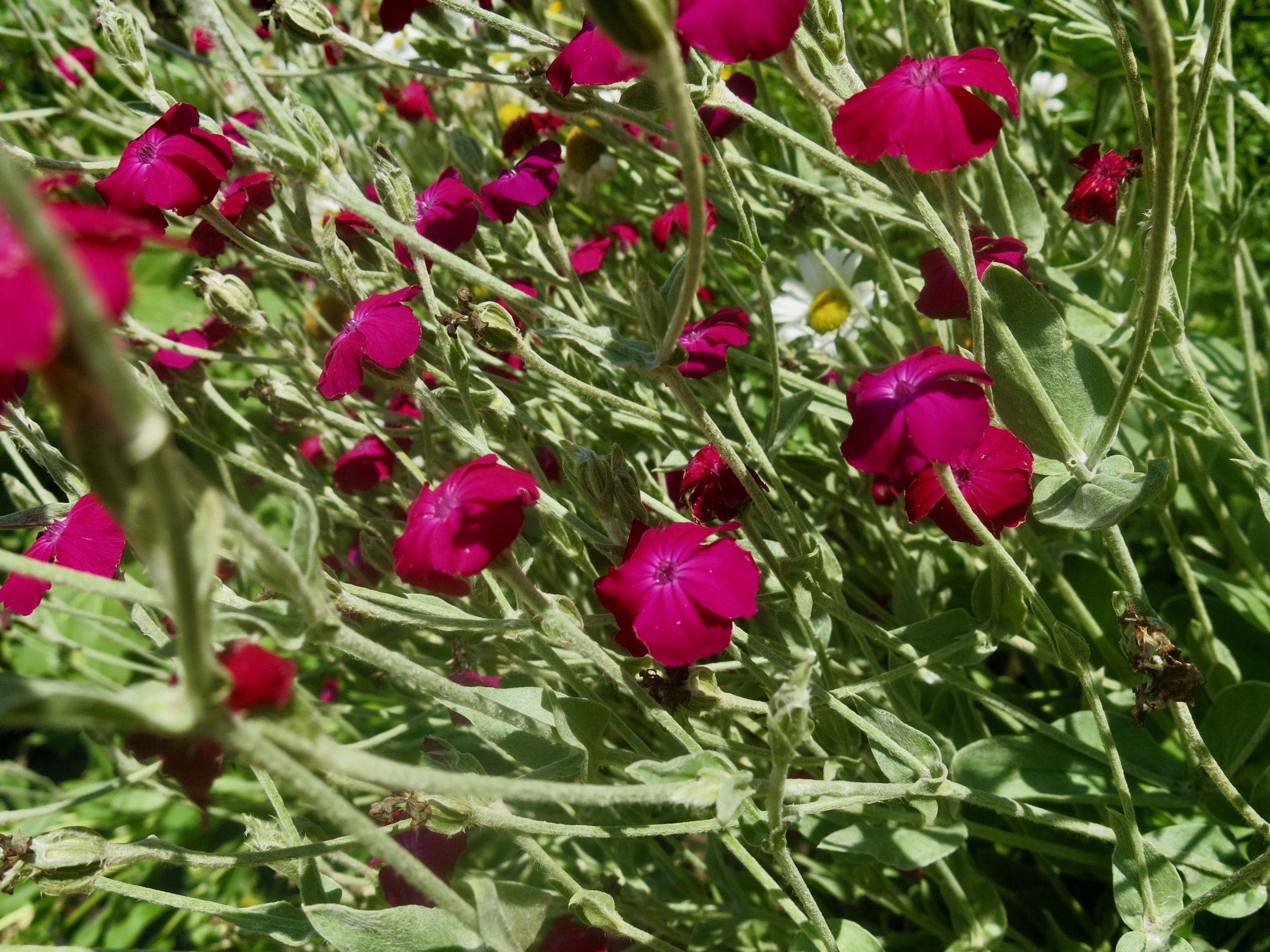
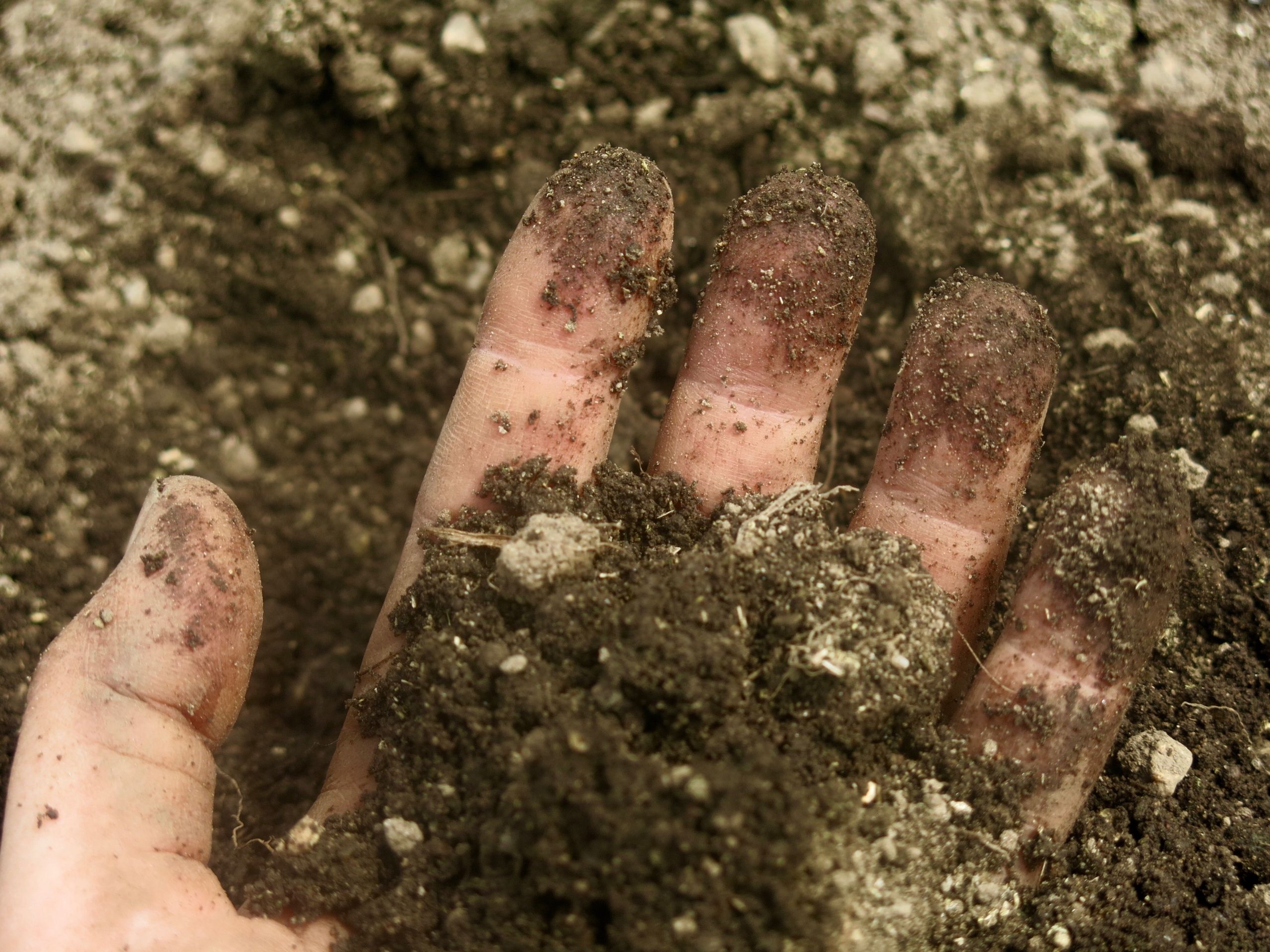 Think in Long Arcs of Time:
Think in Long Arcs of Time:
I started gardening in my early twenties with my husband and a few equally enthusiastic roommates. We learned alongside each other. We read a few books. We experimented. We planted and things grew! Some of us were more interested in the practical matter of growing food. Others of us, while deeply appreciating the miraculous food grown, had our eyes on beauty above all else: flowers, butterflies and hummingbirds, shapes of garden beds, and the general aesthetics of a garden well tended, which involved bringing in more flowers, as many as possible. That was me. With Beauty as my main lens, I noticed how in the valley below there grew copious amounts of buttercups. Enthralled by their pretty goldenness, I spent afternoons digging up clumps of buttercups from ditches and fields, and carrying them up the mountainside on my bicycle with an equally besotted friend. We then planted them lovingly. Oooh, so much gold! All over the garden. So beautiful! But alas, as the gardener in me matured, and the buttercups kept on spreading all over the garden, I learned that – yikes! – buttercups are highly prolific and invasive, basically a pretty weed that shouldn’t be in a garden, but better belongs in a field. At that point, I also understood that my husband truly loved me, for despite his eye rolls and deeply practical preferences, he hadn’t stood in the way of my buttercup importation. Twenty plus years and I am still pulling them out. A reminder of youthful folly, forgiveness, as well as: “Think ahead, darling!”
Letting Grow instead of Yanking:
When I slow down enough to watch Nature do her thing, I notice time and again, that there is indeed a time for everything. There is a time to sow, and a time to reap. There is a time to laugh and a time to weep. There is a time to curl up and hibernate, and a time to unfold and express. And each growing thing has its own timing. We would never pull at a kale plant in our garden in the hopes it would grow faster. How do we miss this simple truth when it comes to ourselves and our fellow humans, especially the little ones in our lives? When did we get the idea that if we yank on ourselves or another, we would grow quicker, mature faster, get over our follies and foibles more efficiently?
The only way to help a vegetable grow in a garden is to nurture the soil it sits in. And the only way to do that effectively is to find out if there is anything missing (or too much of) in said soil. Back to us humans. May we create the conditions for growth and healing, instead of pushing and pulling. May we look carefully at the “ground” upon which each of us stands and investigate what might be missing, or what there might be too much of. May we then act accordingly. Likely the ground needs more kindness, more honesty, more love… that kind of thing. And likely, the ground needs less shame, less threat, less scolding.
No attachment to Outcome:
Gardens are not machines. Nor is the weather. Nor anything else connected with nature, thankfully. But also: so many unknowns, myriad surprises. Groundhogs find their way to the juiciest cabbages. Rabbits can clear out early greens like nobody’s business. Aphids can turn the most glorious kale into wilted grey shells of their former selves. Weeds can come out of nowhere and choke your onions. Deer can get you replanting your starts three times, or more. Bears can take down entire fence lines in their quest for the apples. Blueberry bushes may or may not produce, depending on the year; I am sure there is a reason, but I haven’t figured it out. I write this note the morning after our first frost this year, an early one as we have just entered October (I started writing this piece on garden insights in the spring, and then… the garden (and with that I mean the rest of life took over). Last night at 11pm my husband sniffs the air and guesses a frost is on its way. No idea how he knows such things (perhaps people with green thumbs also sniff the air differently?). Confirmed by a check of weather forecast, we make our way with headlamps, gather mighty pumpkins and second-growth broccoli, throw towels over some flower patches and lettuce rows I hope survive. And today, as the sun rises over a gorgeous mist, I check to see what the frost brought: it was a hard one. Not even my covered lettuces survived. Some flowers did. Ah well, no attachment to outcome. An ongoing life lesson indeed.
What else to be discovered?
I imagine many more insights tucked away in the folds of each garden. I look forward to the ones I have yet to uncover as I keep on digging. I would love to hear yours if you have some to share.
